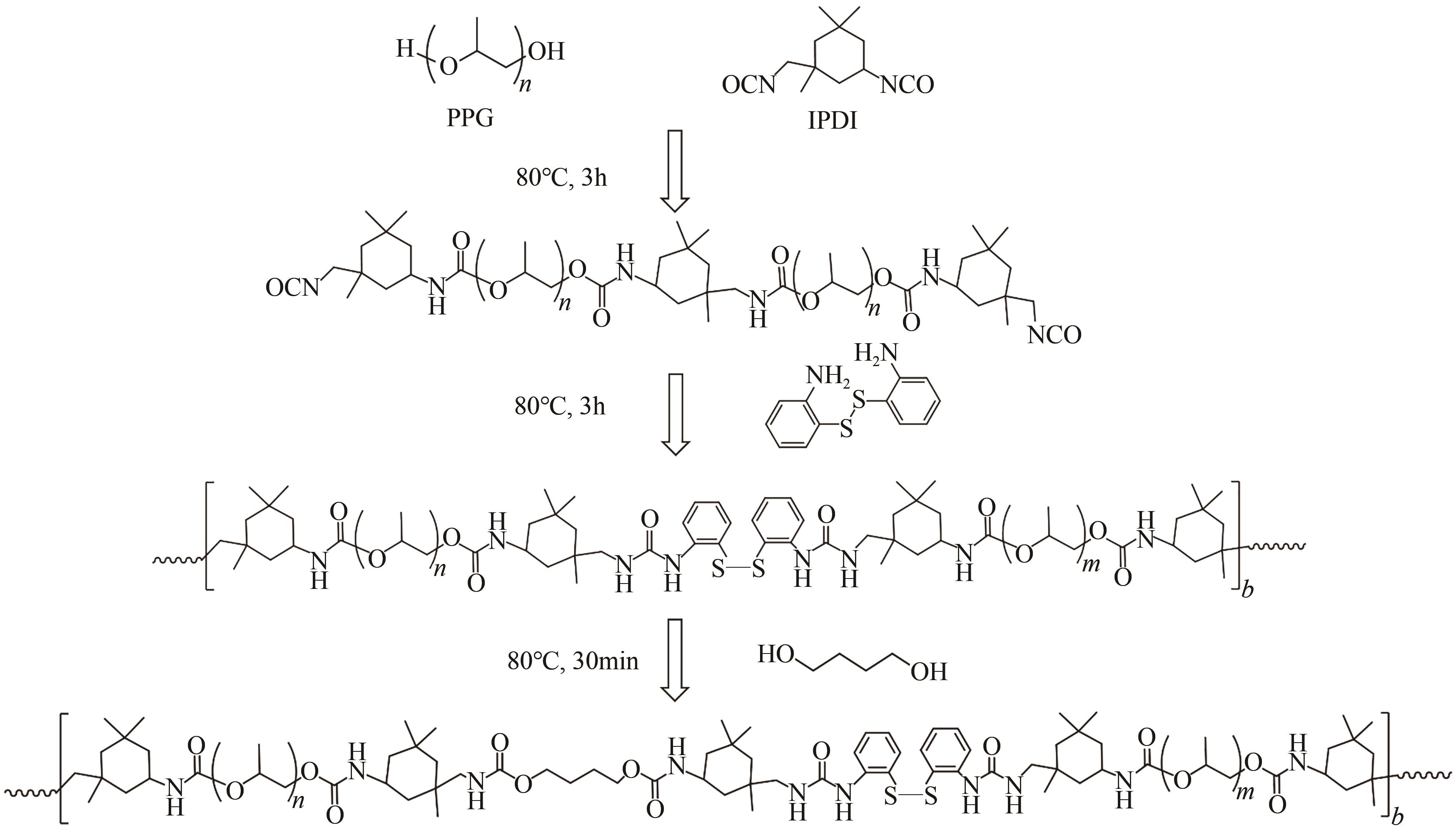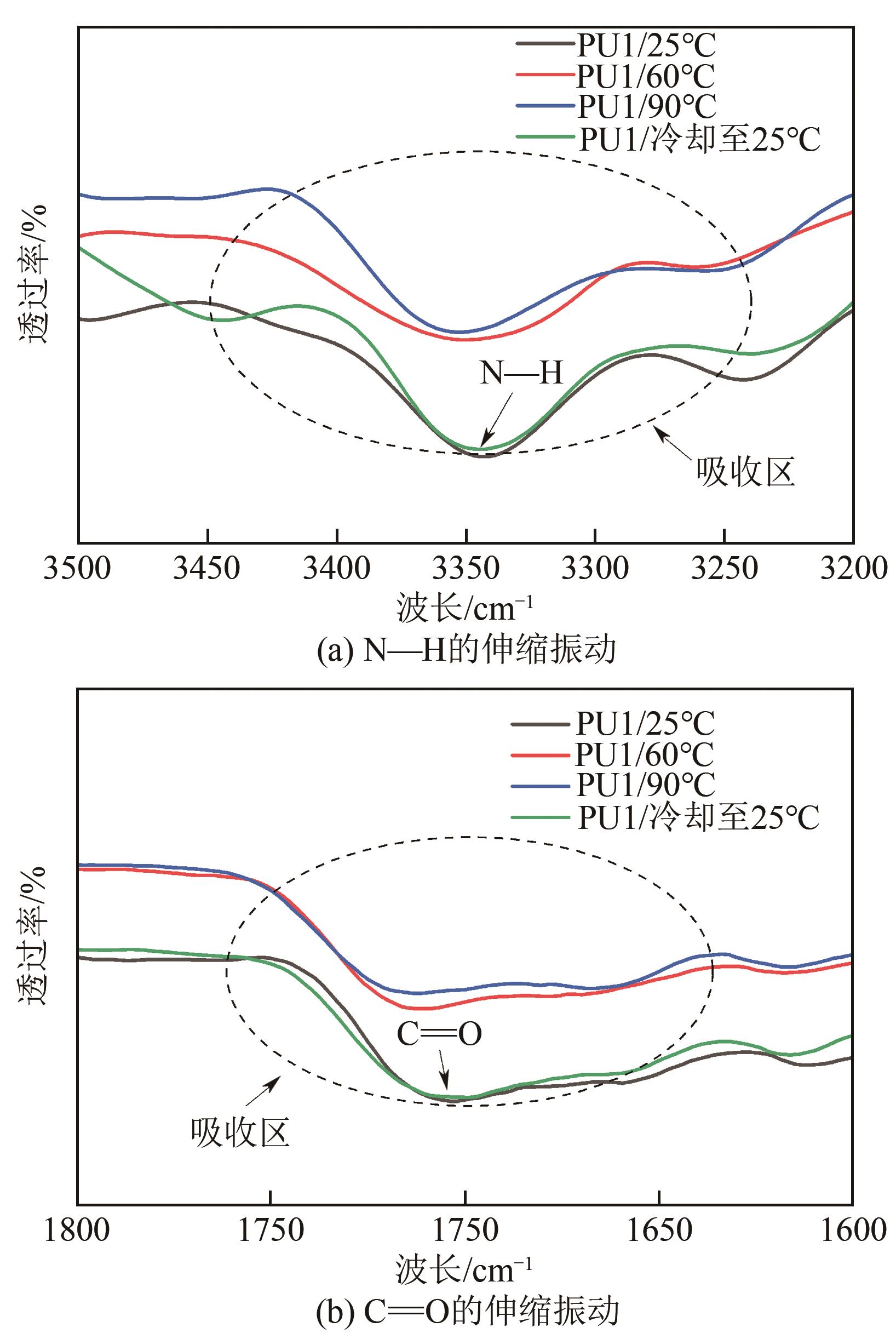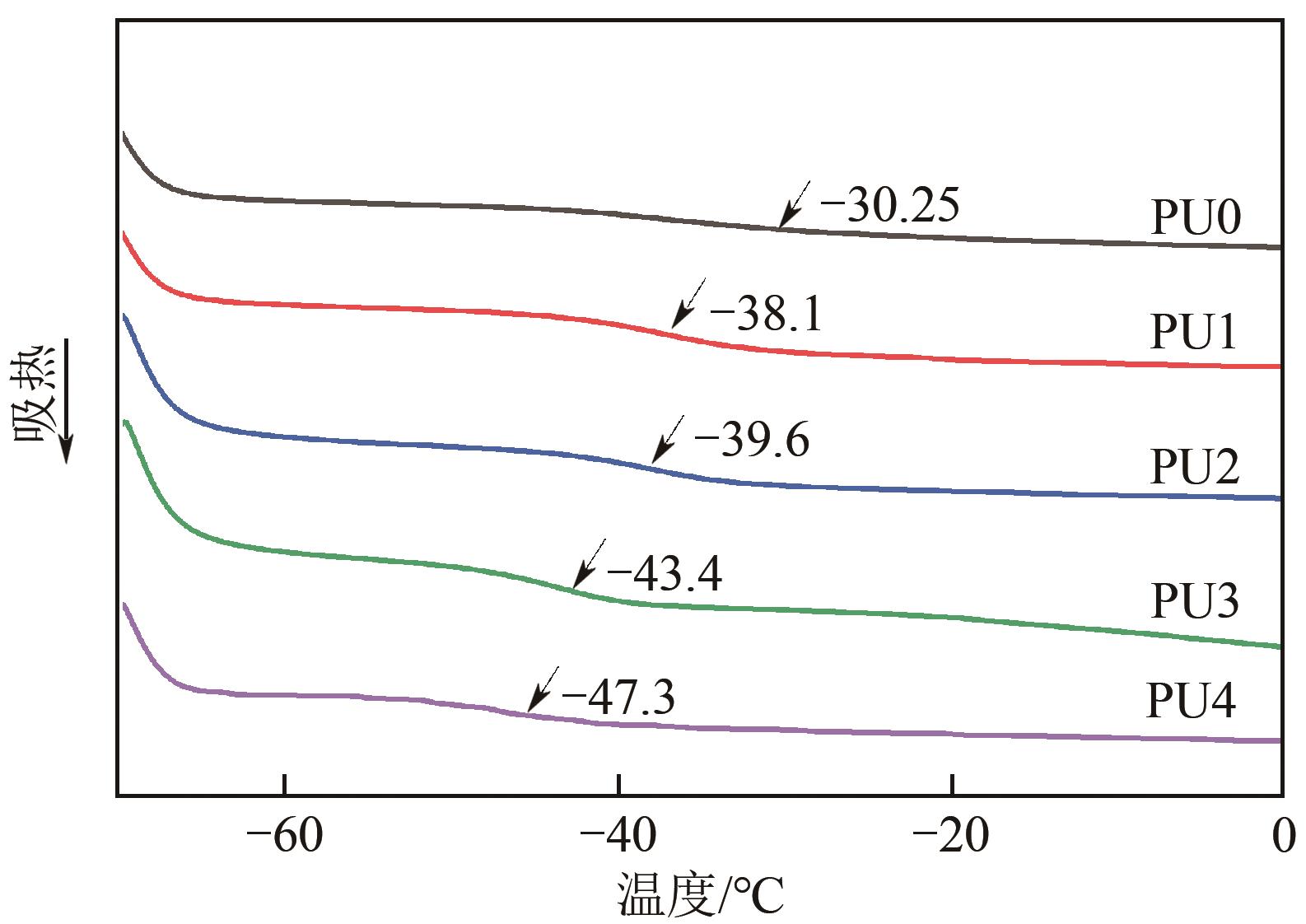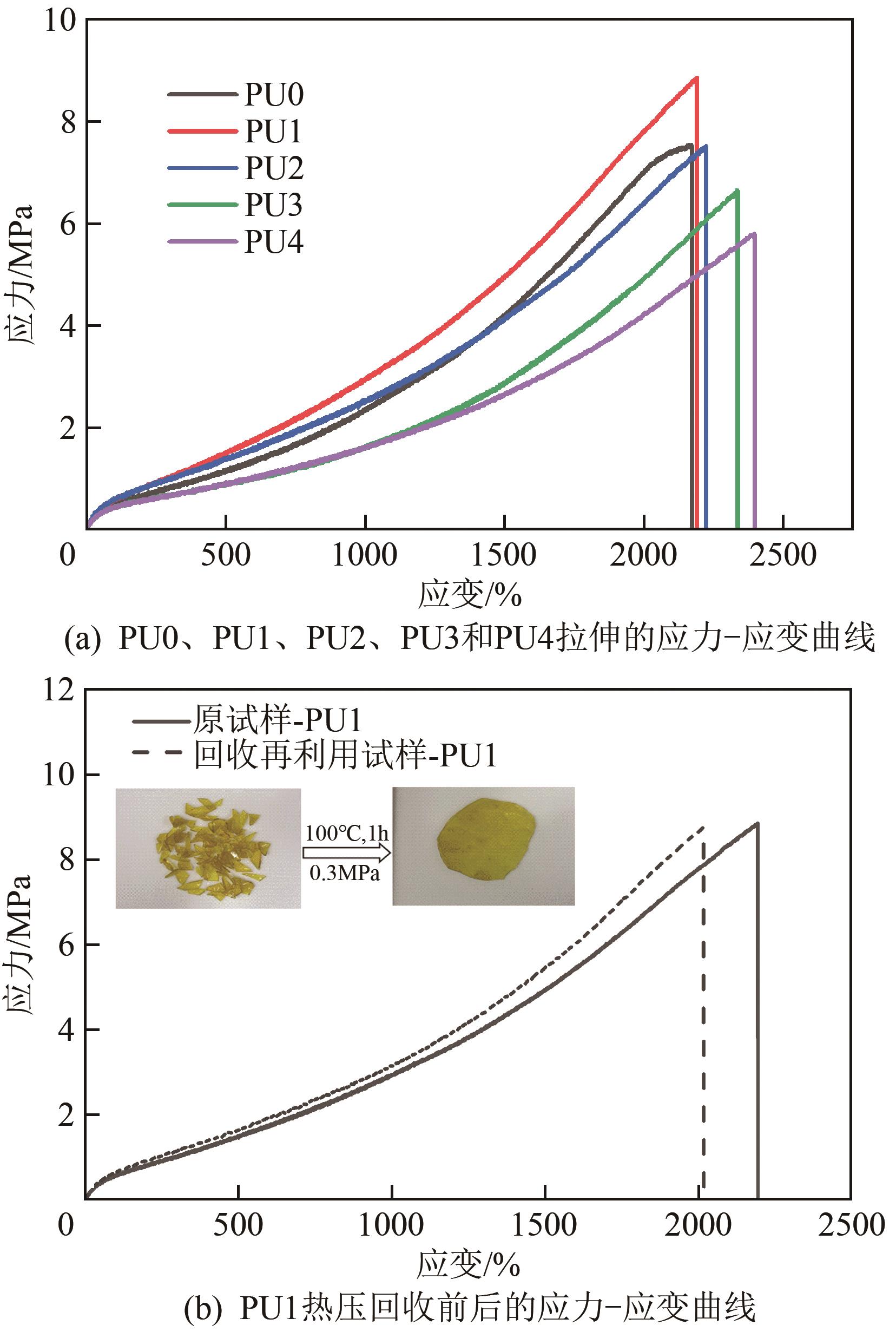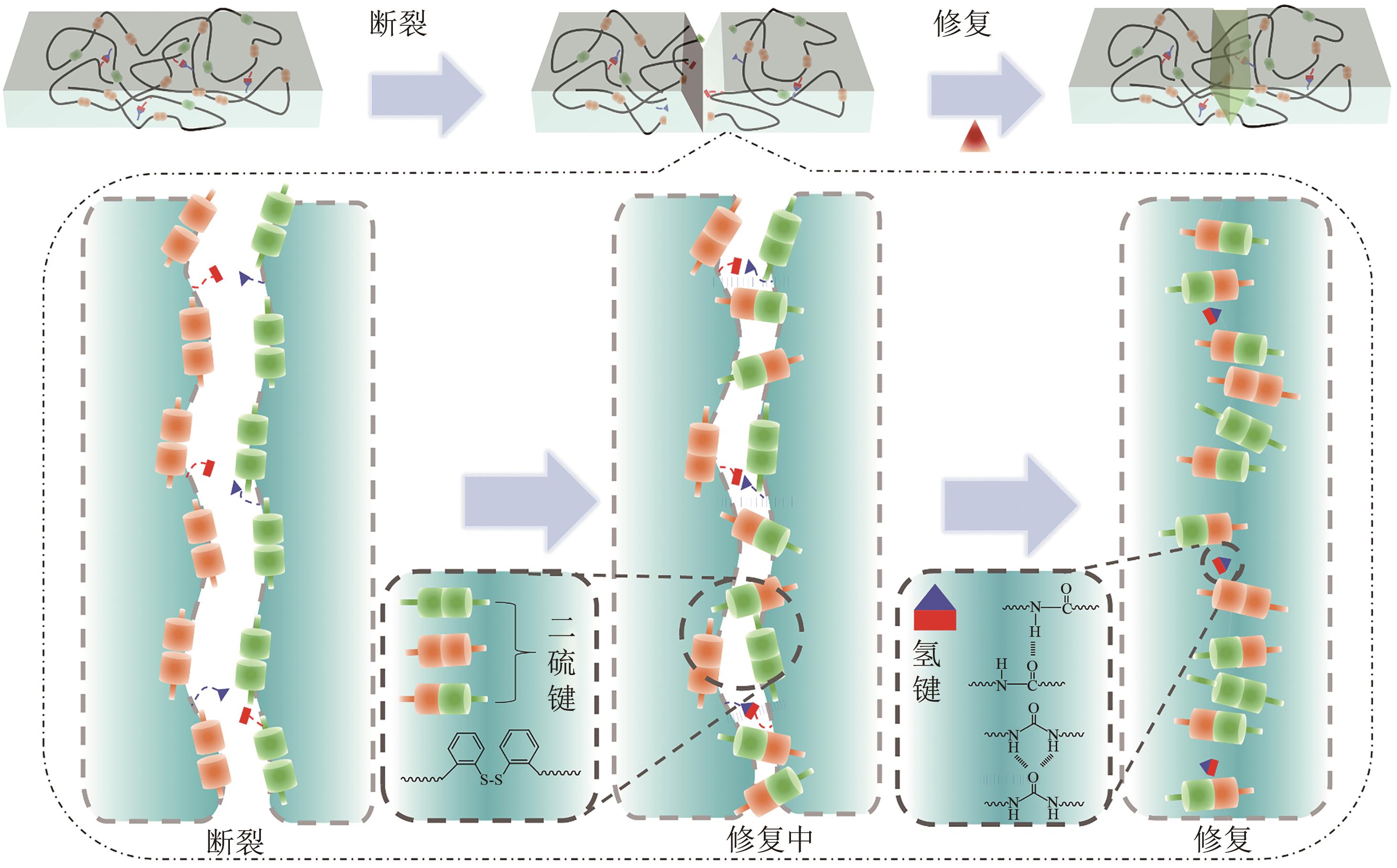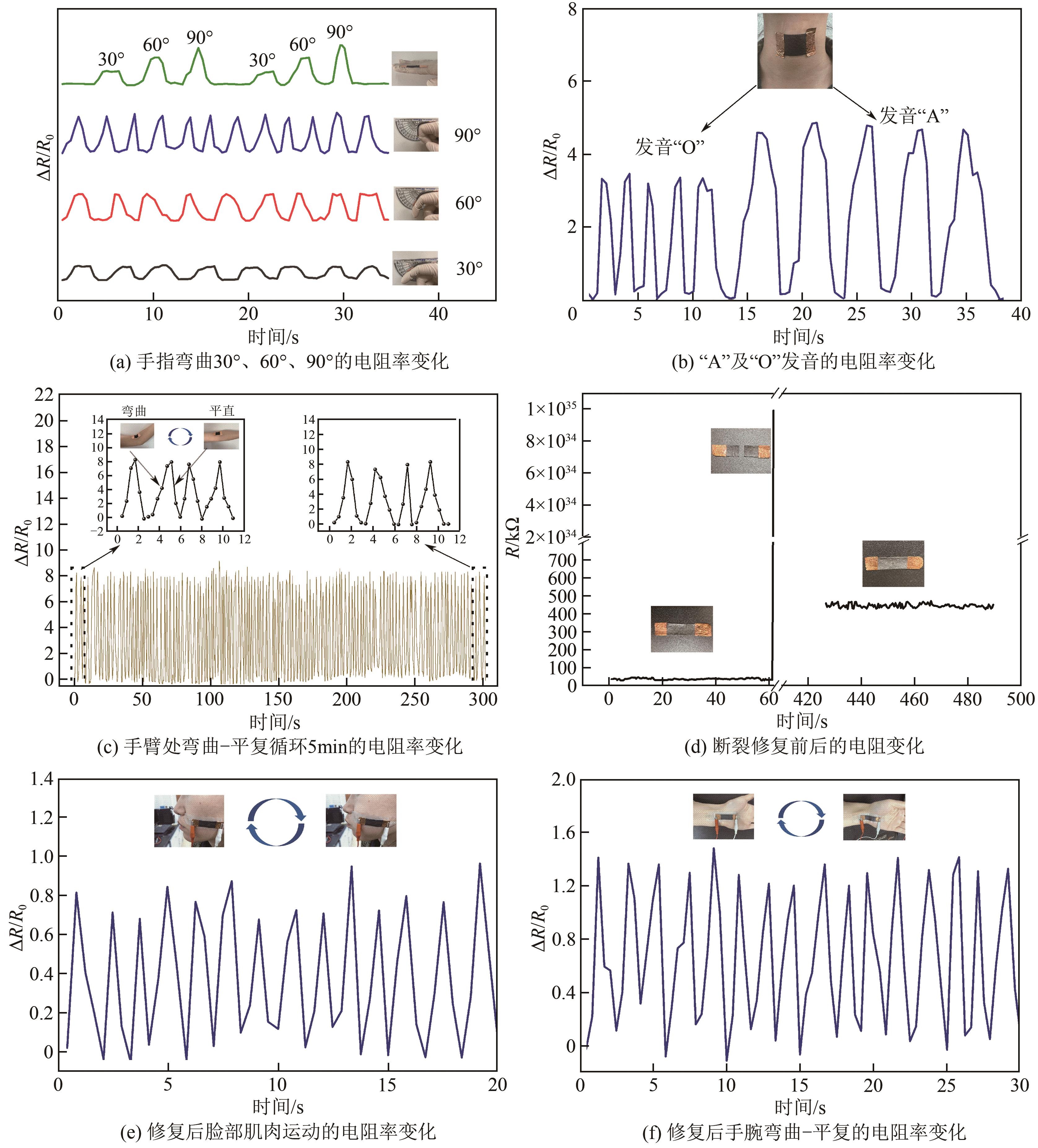| 1 |
ZHENG Ning, HOU Jingjing, XU Yang, et al. Catalyst-free thermoset polyurethane with permanent shape reconfigurability and highly tunable triple-shape memory performance[J]. ACS Macro Letters, 2017, 6(4): 326-330.
|
| 2 |
MONTANO Vincenzo, VOGEL Wouter, SMITS Angela, et al. From scratch closure to electrolyte barrier restoration in self-healing polyurethane coatings[J]. ACS Applied Polymer Materials, 2021, 3(5): 2802-2812.
|
| 3 |
ZHANG Yu, ZHENG Jian, ZHANG Xiao, et al. Dual dynamic bonds self-healing polyurethane with superior mechanical properties over a wide temperature range[J]. European Polymer Journal, 2022, 163: 110934.
|
| 4 |
XU Kangming, CHEN Guoqing, ZHAO Mingjie, et al. Transparent, self-recoverable, highly tough, puncture and tear resistant polyurethane supramolecular elastomer with fast self-healing capacity via hard-soft hard domain design[J]. RSC Advances, 2022, 12(5): 2712-2720.
|
| 5 |
XU Xinmeng, ZHOU Zhongqun, QIN Liangrong, et al. Preparation of PVA/PU/PUA microcapsules and application in self-healing two-component waterborne polyurethane coatings[J]. Journal of Coatings Technology and Research, 2022, 19(3): 977-988.
|
| 6 |
WHITE S R, SOTTOS N R, GEUBELLE P H, et al. Autonomic healing of polymer composites[J]. Nature, 2001, 409(6822): 794-797.
|
| 7 |
HANSEN Christopher J, WU Willie, TOOHEY Kathleen S, et al. Self-healing materials with interpenetrating microvascular networks[J]. Advanced Materials, 2009, 21(41): 4143-4147.
|
| 8 |
Youngho EOM, KIM Seon-Mi, LEE Minkyung, et al. Mechano-responsive hydrogen-bonding array of thermoplastic polyurethane elastomer captures both strength and self-healing[J]. Nature Communications, 2021, 12(1): 621.
|
| 9 |
WANG Zhijian, TIAN Hongmiao, HE Qiguang, et al. Reprogrammable, reprocessible, and self-healable liquid crystal elastomer with exchangeable disulfide bonds[J]. ACS Applied Materials & Interfaces, 2017, 9(38): 33119-33128.
|
| 10 |
JIA Han, GU Shuying. A near infrared induced self-healable composite based on disulfide bonds for flexible electronics[J]. Journal of Polymer Research, 2020, 27(10): 298.
|
| 11 |
MEI J F, JIA X Y, LAI J C, et al. A highly stretchable and autonomous self-healing polymer based on combination of Pt…Pt and π-π interactions[J]. Macromolecular Rapid Communications, 2016, 37(20): 1667-1675.
|
| 12 |
YANG Shiwen, WANG Shuang, DU Xiaosheng, et al. Mechanically robust self-healing and recyclable flame-retarded polyurethane elastomer based on thermoreversible crosslinking network and multiple hydrogen bonds[J]. Chemical Engineering Journal, 2020, 391: 123544.
|
| 13 |
RONG Jinchuang, ZHONG Jiang, YAN Wanlong, et al. Study on waterborne self-healing polyurethane with dual dynamic units of quadruple hydrogen bonding and disulfide bonds[J]. Polymer, 2021, 221: 123625.
|
| 14 |
YANG Yilin, LU Xun, WANG Weiwei. A tough polyurethane elastomer with self-healing ability[J]. Materials & Design, 2017, 127: 30-36.
|
| 15 |
FORMOSO Elena, ASUA José M, MATXAIN Jon M, et al. The role of non-covalent interactions in the self-healing mechanism of disulfide-based polymers[J]. Physical Chemistry Chemical Physics, 2017, 19(28): 18461-18470.
|
| 16 |
ZHAO Boyu, CONG Honglian, DONG Zhijia. Highly stretchable and sensitive strain sensor based on Ti3C2-coated electrospinning TPU film for human motion detection[J]. Smart Materials and Structures, 2021, 30(9): 095003.
|
| 17 |
YE Gongbo, JIANG Tao. Preparation and properties of self-healing waterborne polyurethane based on dynamic disulfide bond[J]. Polymers, 2021, 13(17): 2936.
|
| 18 |
LING Lei, LI Jinhui, ZHANG Guoping, et al. Self-healing and shape memory linear polyurethane based on disulfide linkages with excellent mechanical property[J]. Macromolecular Research, 2018, 26(4): 365-373.
|
| 19 |
Aleksandra WOLIŃSKA-GRABCZYK, KACZMARCZYK Bożena, JANKOWSKI Andrzej. Investigations of hydrogen bonding in the poly(urethane-urea)-based membrane materials by using FTIR spectroscopy[J]. PJCT, 2008, 10(4): 53-56.
|
| 20 |
IRIGOYEN Mikel, MATXAIN Jon M, Fernando RUIPÉREZ. Effect of molecular structure in the chain mobility of dichalcogenide-based polymers with self-healing capacity[J]. Polymers, 2019, 11(12): 1960.
|
| 21 |
LEI Zhouqiao, XIANG Hongping, YUAN Yongjian, et al. Room-temperature self-healable and remoldable cross-linked polymer based on the dynamic exchange of disulfide bonds[J]. Chemistry of Materials, 2014, 26(6): 2038-2046.
|
| 22 |
REKONDO Alaitz, MARTIN Roberto, RUIZ DE LUZURIAGA Alaitz, et al. Catalyst-free room-temperature self-healing elastomers based on aromatic disulfide metathesis[J]. Materials Horizons, 2014, 1(2): 237-240.
|
| 23 |
王玉龙, 李雅琼, 王怡博, 等. 一种基于动态双硫键的自修复聚氨酯弹性体的制备与性能[J]. 聚氨酯工业, 2020, 35(2): 22-25.
|
|
WANG Yulong, LI Yaqiong, WANG Yibo, et al. Preparation and properties of a self-healing polyurethane elastomer based on dynamic disulfide bond[J]. Polyurethane Industry, 2020, 35(2): 22-25.
|
| 24 |
晏文康, 万里鹰. 基于两种双硫键自修复聚氨酯制备及性能[J]. 工程塑料应用, 2021, 49(2): 34-39.
|
| 26 |
王玉龙, 胡国胜, 张静婷, 等. 基于双硫键和氢键协效的高性能自修复聚氨酯脲的研制[J]. 化工进展, 2021, 40(1): 324-331.
|
|
WANG Yulong, HU Guosheng, ZHANG Jingting, et al. Development of self-healing poly (urethane urea) with high performances based on the synergistic effect of disulfide bonds and hydrogen bonds[J]. Chemical Industry and Engineering Progress, 2021, 40(1): 324-331.
|
| 27 |
ZHOU Jianlin, LIU Han, SUN Yangyi, et al. Self-healing titanium dioxide nanocapsules-graphene/multi-branched polyurethane hybrid flexible film with multifunctional properties toward wearable electronics[J]. Advanced Functional Materials, 2021, 31(29): 2011133.
|
| 28 |
CHEN Kunlin, LIU Han, ZHOU Jianlin, et al. Polyurethane blended with silica-nanoparticle-modified graphene as a flexible and superhydrophobic conductive coating with a self-healing ability for sensing applications[J]. ACS Applied Nano Materials, 2022, 5(1): 615-625.
|
| 24 |
YAN Wenkang, WAN Liying. Preparation and performance of self-healing polyurethane based on two kind of disulfide bonds[J]. Engineering Plastics Application, 2021, 49(2): 34-39.
|
| 25 |
LI Shaonan, LIU Mengyue, ZHOU Xing, et al. Self-healing polyurethane elastomer based on crosslinked-linear interpenetrating structure: Preparation, properties, and applications[J]. Macromolecular Materials and Engineering, 2021, 306(4): 2000684.
|
 ), 钱坤1, 俞科静1(
), 钱坤1, 俞科静1( ), 李杰2, 张中威2, 熊自明2, 张耀良3
), 李杰2, 张中威2, 熊自明2, 张耀良3
 ), QIAN Kun1, YU Kejing1(
), QIAN Kun1, YU Kejing1( ), LI Jie2, ZHANG Zhongwei2, XIONG Ziming2, ZHANG Yaoliang3
), LI Jie2, ZHANG Zhongwei2, XIONG Ziming2, ZHANG Yaoliang3
